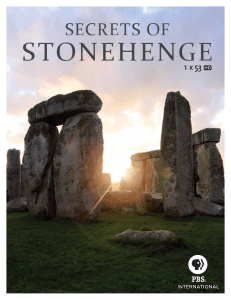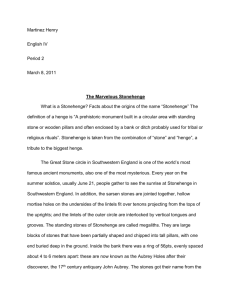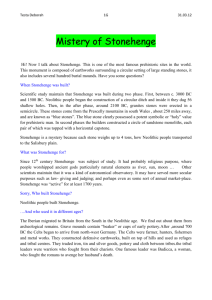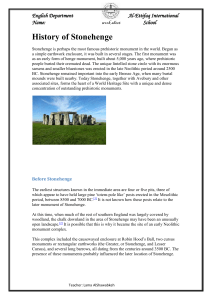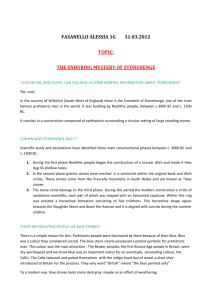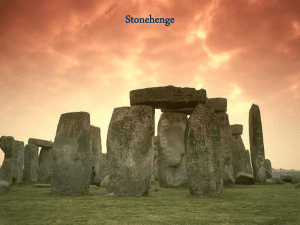Matthew Budd Radley College – OX14 2HR STONEHENGE
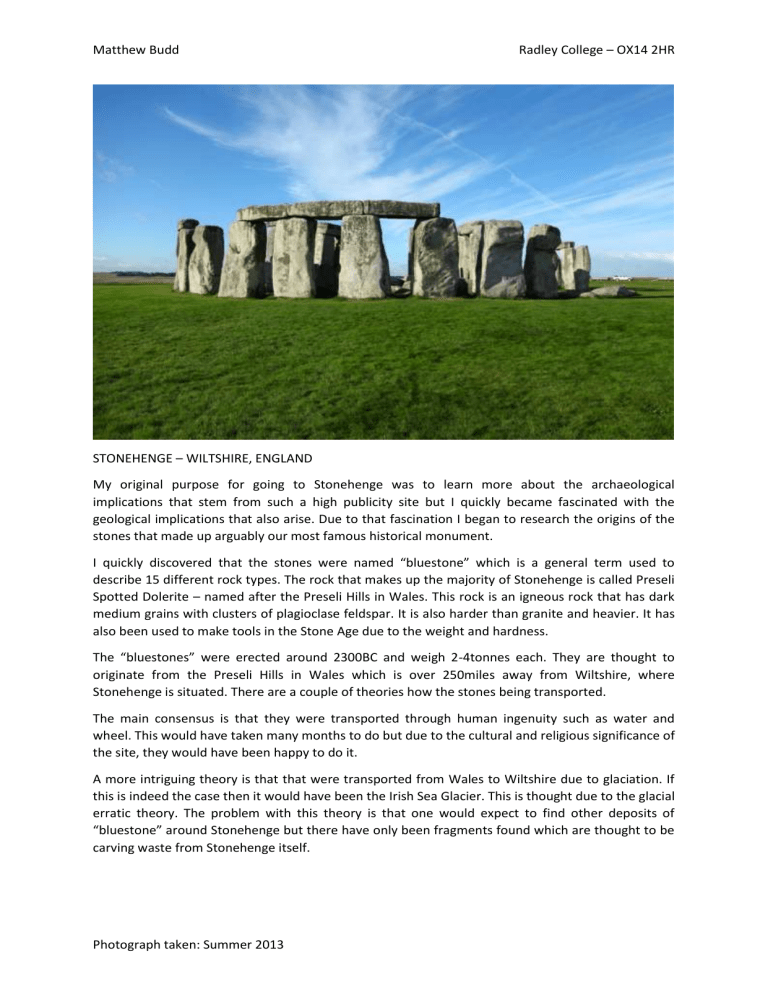
Matthew Budd Radley College – OX14 2HR
STONEHENGE – WILTSHIRE, ENGLAND
My original purpose for going to Stonehenge was to learn more about the archaeological implications that stem from such a high publicity site but I quickly became fascinated with the geological implications that also arise. Due to that fascination I began to research the origins of the stones that made up arguably our most famous historical monument.
I quickly discovered that the stones were named “bluestone” which is a general term used to describe 15 different rock types. The rock that makes up the majority of Stonehenge is called Preseli
Spotted Dolerite – named after the Preseli Hills in Wales. This rock is an igneous rock that has dark medium grains with clusters of plagioclase feldspar. It is also harder than granite and heavier. It has also been used to make tools in the Stone Age due to the weight and hardness.
The “bluestones” were erected around 2300BC and weigh 2-4tonnes each. They are thought to originate from the Preseli Hills in Wales which is over 250miles away from Wiltshire, where
Stonehenge is situated. There are a couple of theories how the stones being transported.
The main consensus is that they were transported through human ingenuity such as water and wheel. This would have taken many months to do but due to the cultural and religious significance of the site, they would have been happy to do it.
A more intriguing theory is that that were transported from Wales to Wiltshire due to glaciation. If this is indeed the case then it would have been the Irish Sea Glacier. This is thought due to the glacial erratic theory. The problem with this theory is that one would expect to find other deposits of
“bluestone” around Stonehenge but there have only been fragments found which are thought to be carving waste from Stonehenge itself.
Photograph taken: Summer 2013

